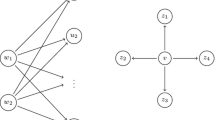Abstract
We study the problem of maximizing the expected spread of an innovation or behavior within a social network, in the presence of “word-of-mouth” referral. Our work builds on the observation that individuals’ decisions to purchase a product or adopt an innovation are strongly influenced by recommendations from their friends and acquaintances. Understanding and leveraging this influence may thus lead to a much larger spread of the innovation than the traditional view of marketing to individuals in isolation.
In this paper, we define a natural and general model of influence propagation that we term the decreasing cascade model, generalizing models used in the sociology and economics communities. In this model, as in related ones, a behavior spreads in a cascading fashion according to a probabilistic rule, beginning with a set of initially “active” nodes. We study the target set selection problem: we wish to choose a set of individuals to target for initial activation, such that the cascade beginning with this active set is as large as possible in expectation. We show that in the decreasing cascade model, a natural greedy algorithm is a 1-1/ e-ε approximation for selecting a target set of size k.
Preview
Unable to display preview. Download preview PDF.
Similar content being viewed by others
References
Brown, J., Reinegen, P.: Social ties and word-of-mouth referral behavior. Journal of Consumer Research 14, 350–362 (1987)
Domingos, P., Richardson, M.: Mining the network value of customers. In: Proc. 7th Intl. Conf. on Knowledge Discovery and Data Mining, pp. 57–66 (2001)
Goldenberg, J., Libai, B., Muller, E.: Using complex systems analysis to advance marketing theory development: Modeling heterogeneity effects on new product growth through stochastic cellular automata. Academy of Marketing Science Review (2001)
Goldenberg, J., Libai, B., Muller, E.: Talk of the network: A complex systems look at the underlying process of word-of-mouth. Marketing Letters 12, 211–223 (2001)
Richardson, M., Domingos, P.: Mining knowledge-sharing sites for viral marketing. In: Proc. 8th Intl. Conf. on Knowledge Discovery and Data Mining, pp. 61–70 (2002)
Kempe, D., Kleinberg, J., Tardos, E.: Maximizing the spread of influence in a social network. In: Proc. 9th Intl. Conf. on Knowledge Discovery and Data Mining, pp. 137–146 (2003)
Rogers, E.: Diffusion of innovations, 4th edn. Free Press (1995)
Valente, T.: Network Models of the Diffusion of Innovations. Hampton Press (1995)
Wasserman, S., Faust, K.: Social Network Analysis. Cambridge University Press (1994)
Granovetter, M.: Threshold models of collective behavior. American Journal of Sociology 83, 1420–1443 (1978)
Berger, E.: Dynamic monopolies of constant size. Journal of Combinatorial Theory Series B 83, 191–200 (2001)
Morris, S.: Contagion. Review of Economic Studies 67, 57–78 (2000)
Peleg, D.: Local majority voting, small coalitions, and controlling monopolies in graphs: A review. In: 3rd Colloquium on Structural Information and Communication, pp. 170–179 (1996)
Cornuejols, G., Fisher, M., Nemhauser, G.: Location of bank accounts to optimize float. Management Science 23, 789–810 (1977)
Nemhauser, G., Wolsey, L., Fisher, M.: An analysis of the approximations for maximizing submodular set functions. Mathematical Programming 14, 265–294 (1978)
Macy, M.: Chains of cooperation: Threshold effects in collective action. American Sociological Review 56, 730–747 (1991)
Macy, M., Willer, R.: From factors to actors: Computational sociology and agent-based modeling. Annual Review of Sociology 28, 143–166 (2002)
Schelling, T.: Micromotives and Macrobehavior. Norton (1978)
Watts, D.: A simple model of fads and cascading failures. Technical Report 00-12-062, Santa Fe Institute Working Paper (2000)
Young, H.P.: Individual Strategy and Social Structure: An Evolutionary Theory of Institutions. Princeton University Press, Princeton (1998)
Young, H.P.: The diffusion of innovations in social networks. Technical Report 02-14-018, Santa Fe Institute Working Paper (2002)
Author information
Authors and Affiliations
Editor information
Editors and Affiliations
Rights and permissions
Copyright information
© 2005 Springer-Verlag Berlin Heidelberg
About this paper
Cite this paper
Kempe, D., Kleinberg, J., Tardos, É. (2005). Influential Nodes in a Diffusion Model for Social Networks. In: Caires, L., Italiano, G.F., Monteiro, L., Palamidessi, C., Yung, M. (eds) Automata, Languages and Programming. ICALP 2005. Lecture Notes in Computer Science, vol 3580. Springer, Berlin, Heidelberg. https://doi.org/10.1007/11523468_91
Download citation
DOI: https://doi.org/10.1007/11523468_91
Publisher Name: Springer, Berlin, Heidelberg
Print ISBN: 978-3-540-27580-0
Online ISBN: 978-3-540-31691-6
eBook Packages: Computer ScienceComputer Science (R0)




